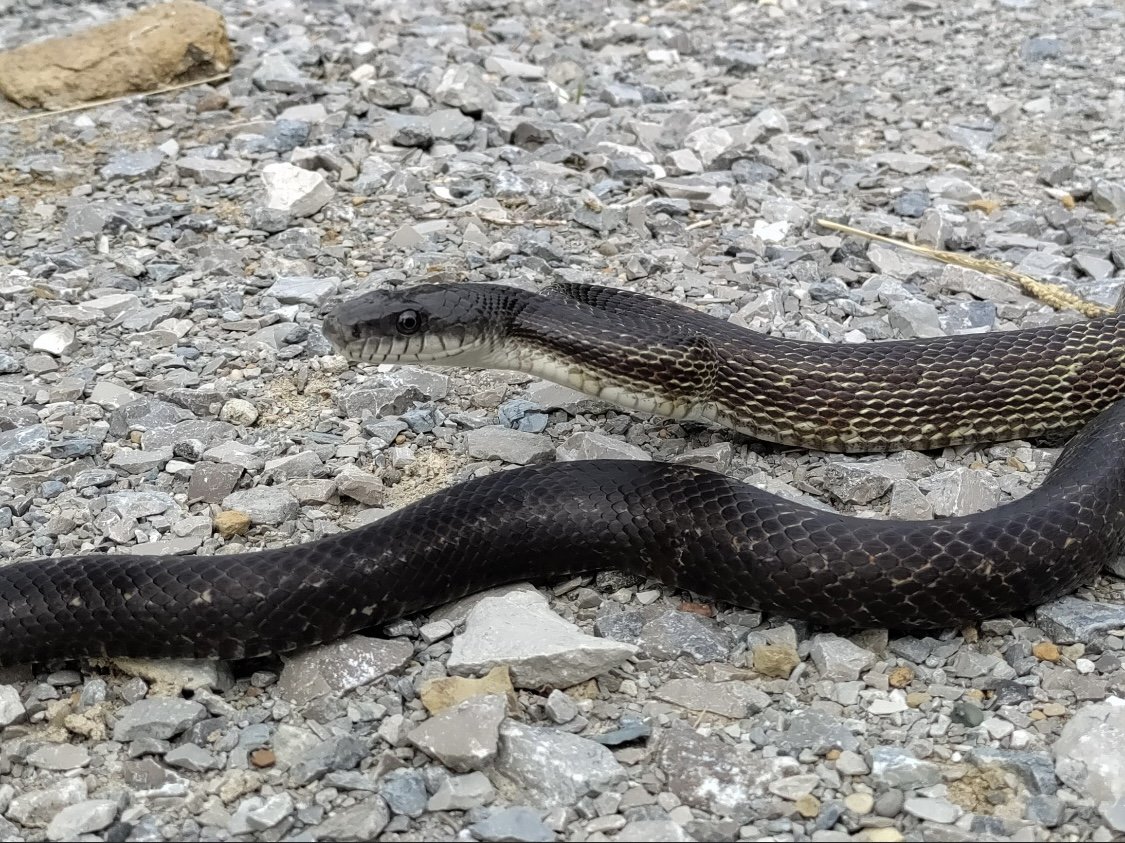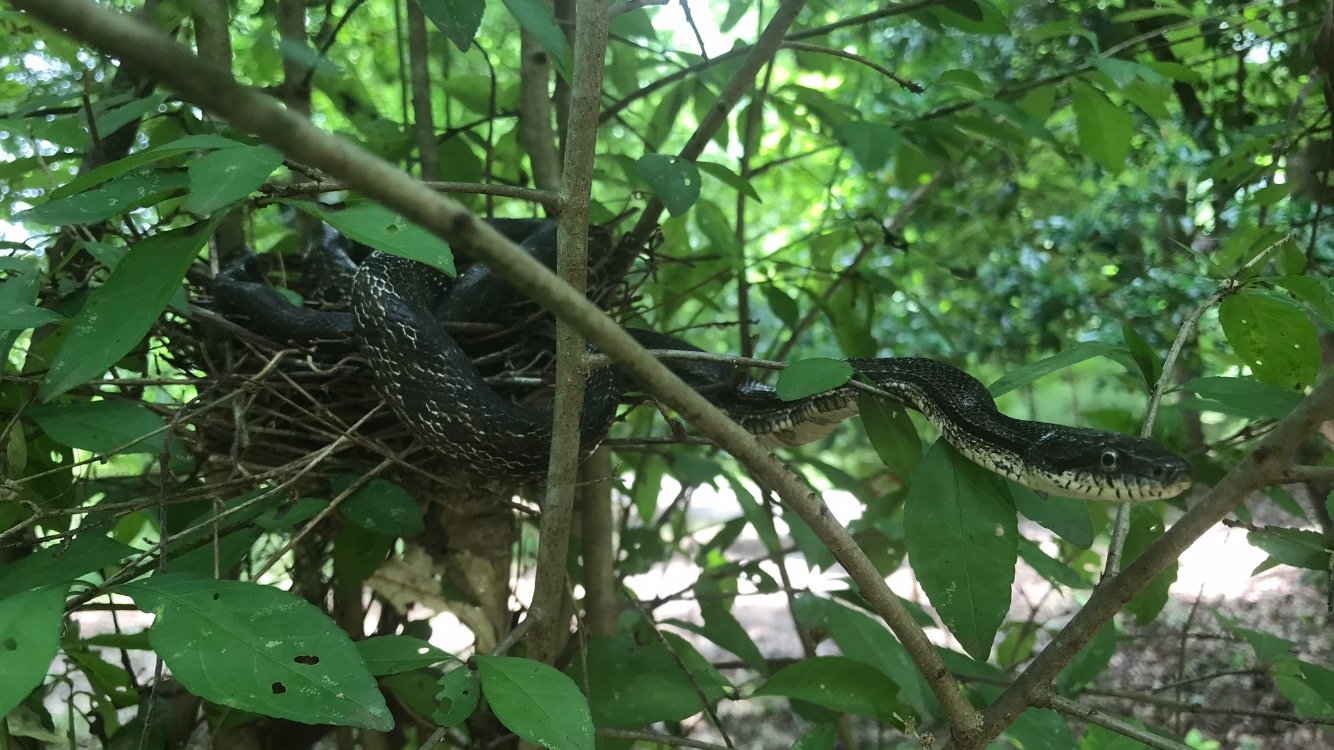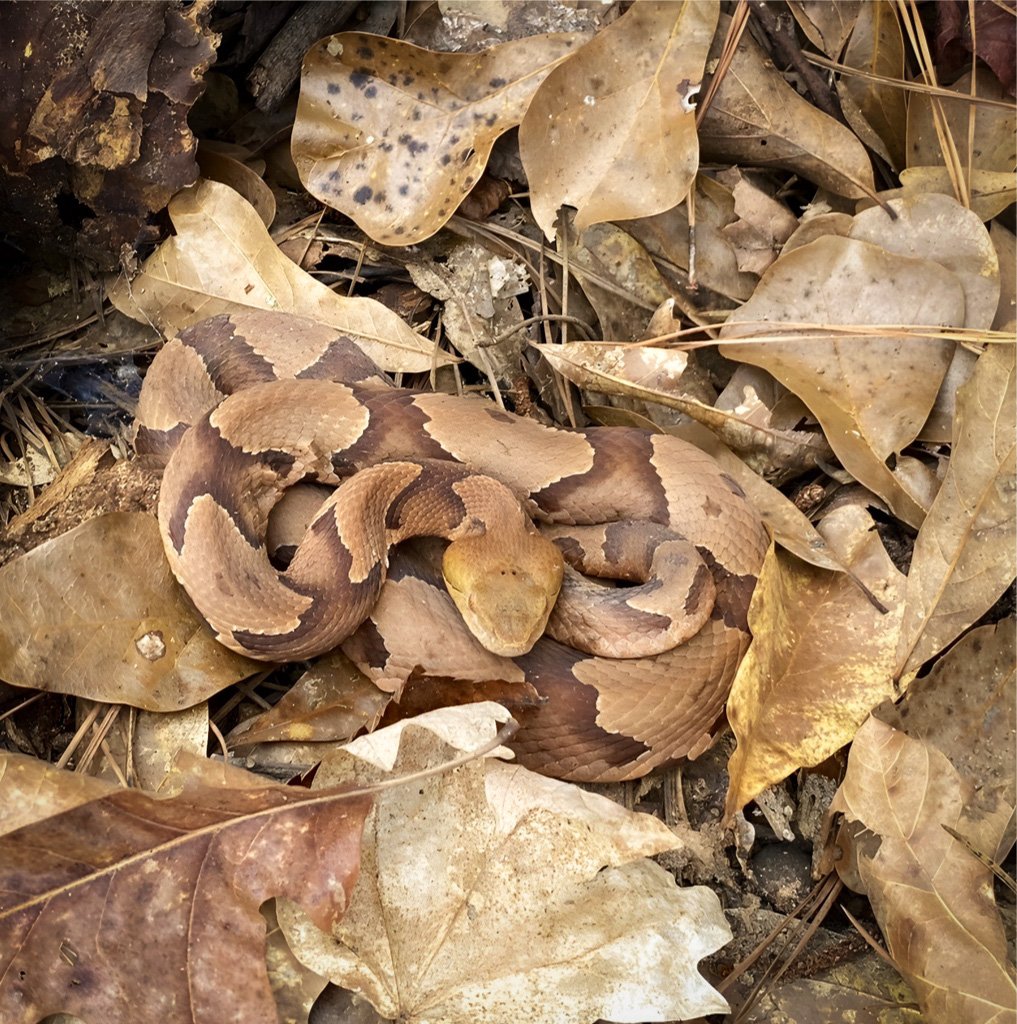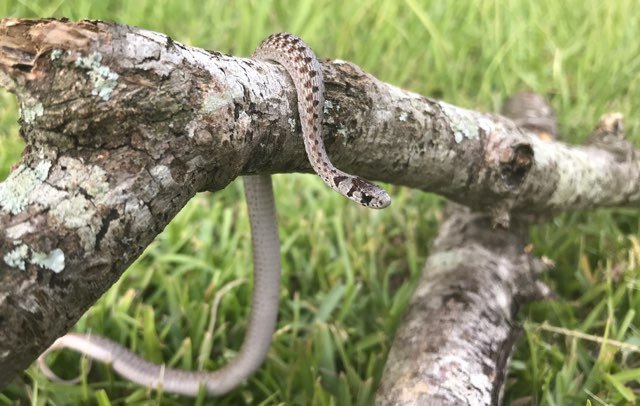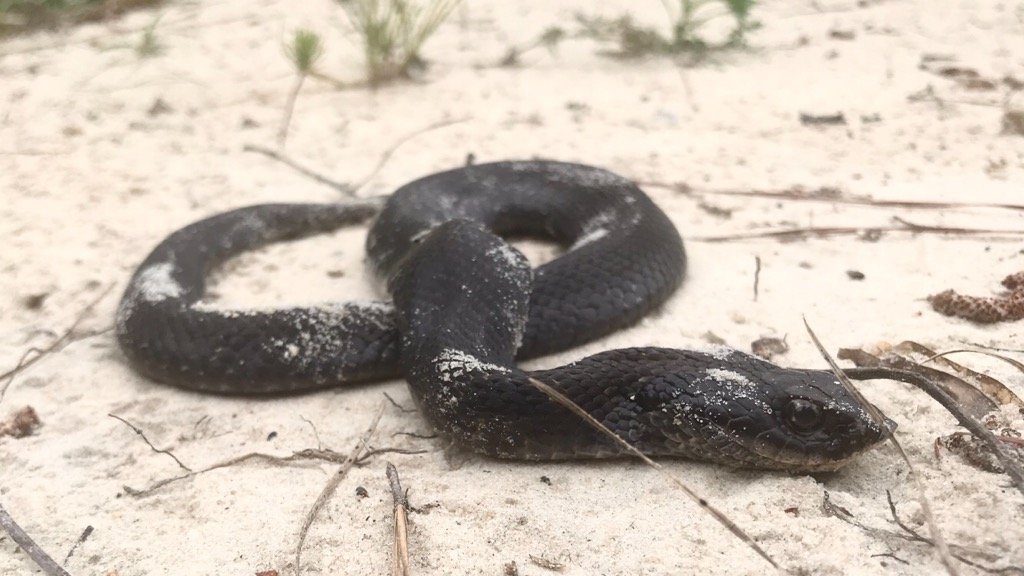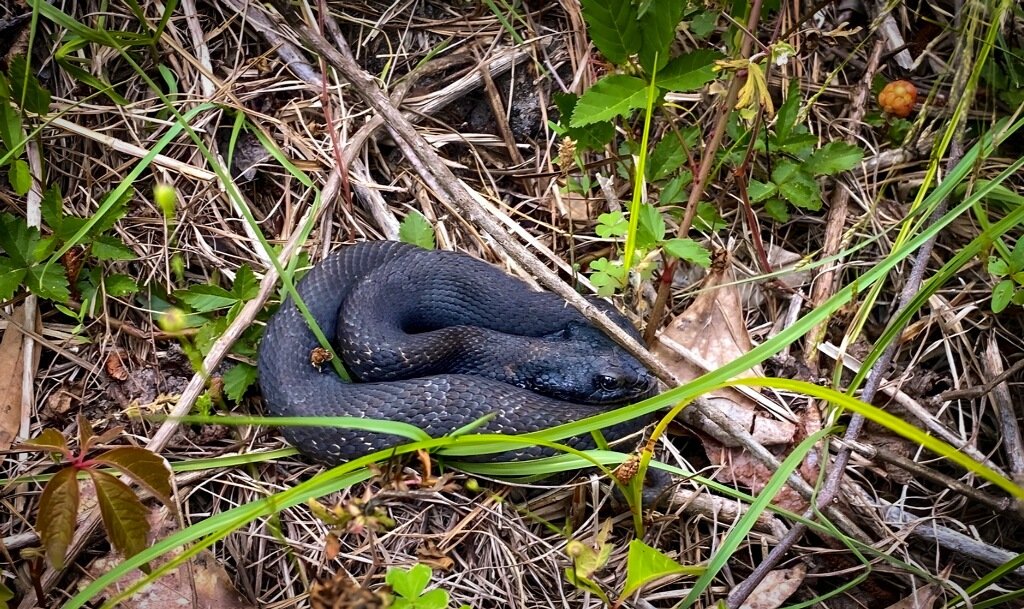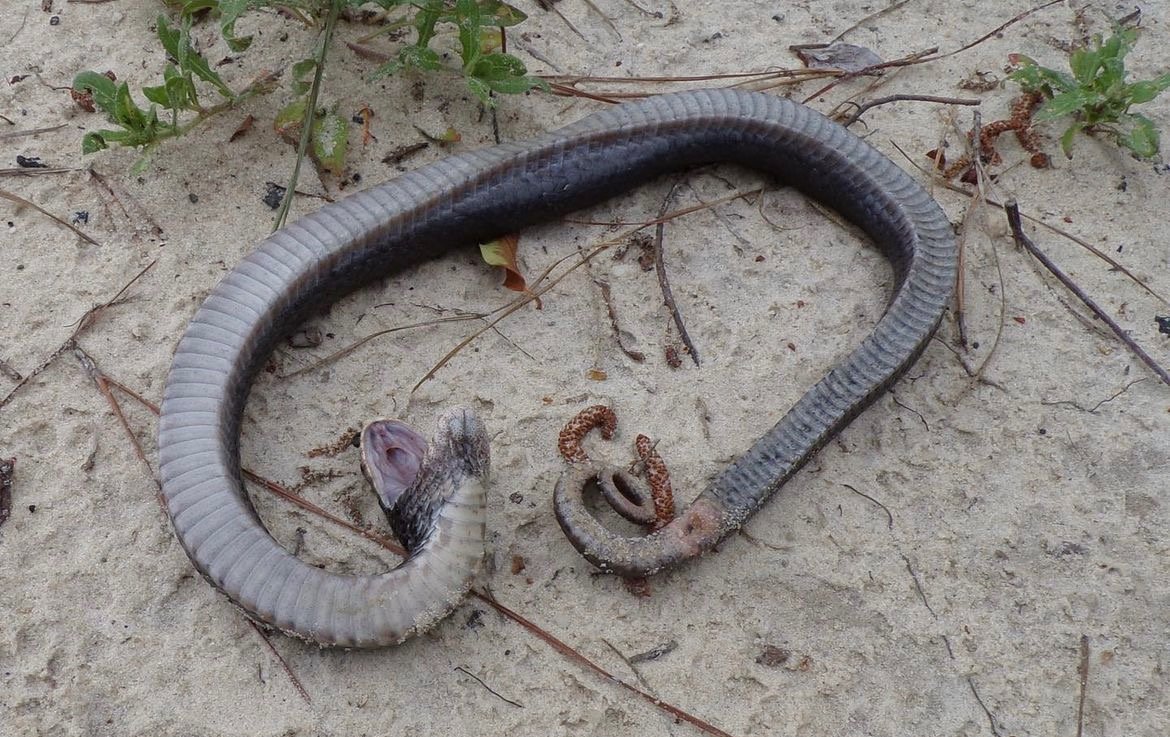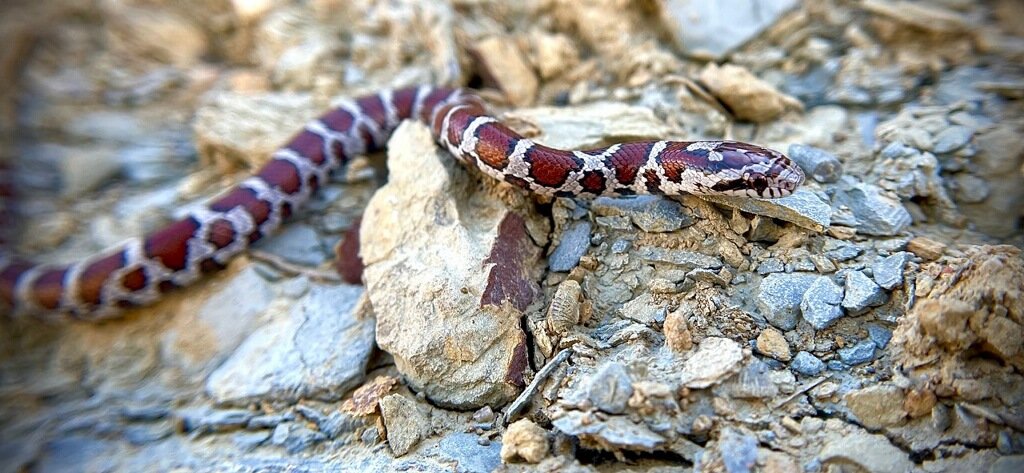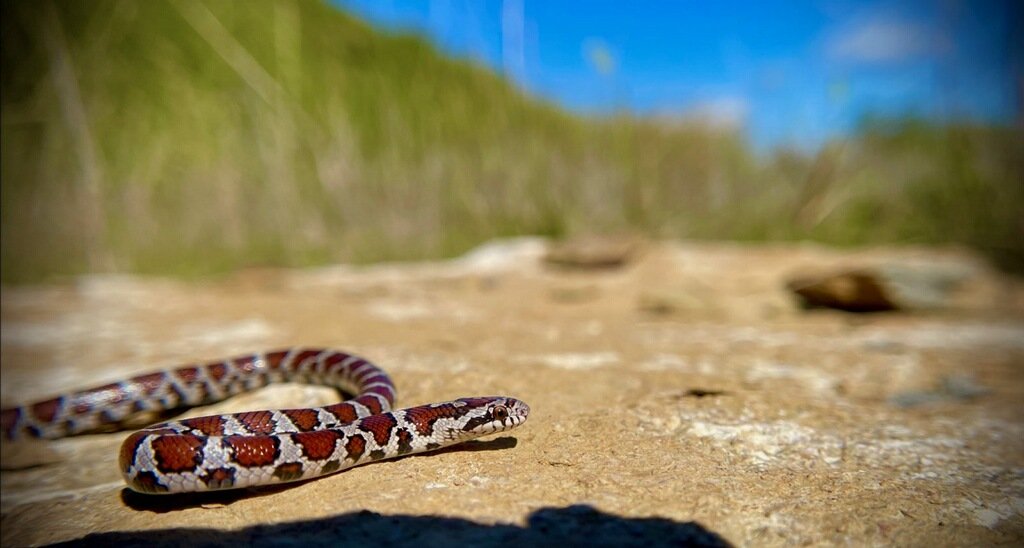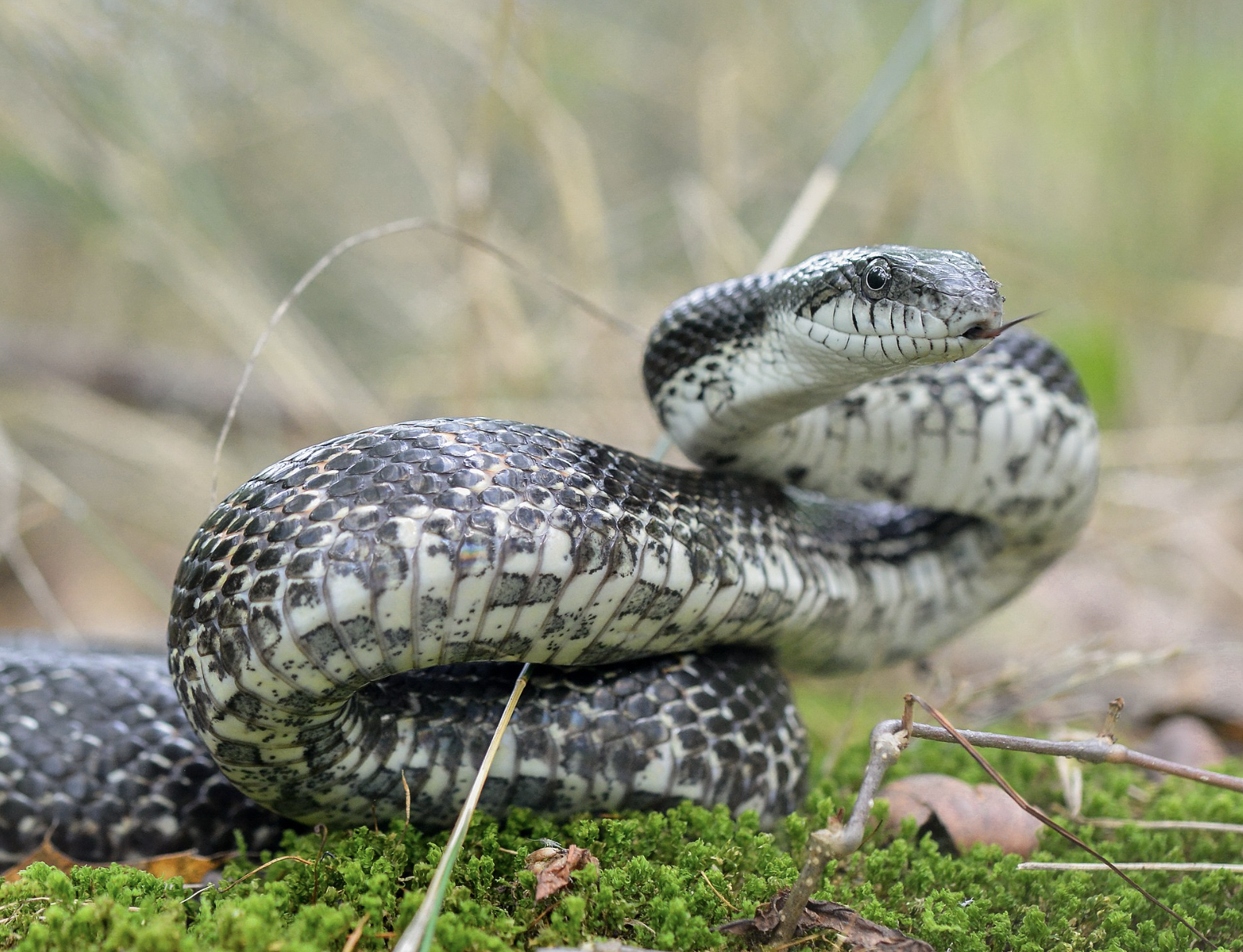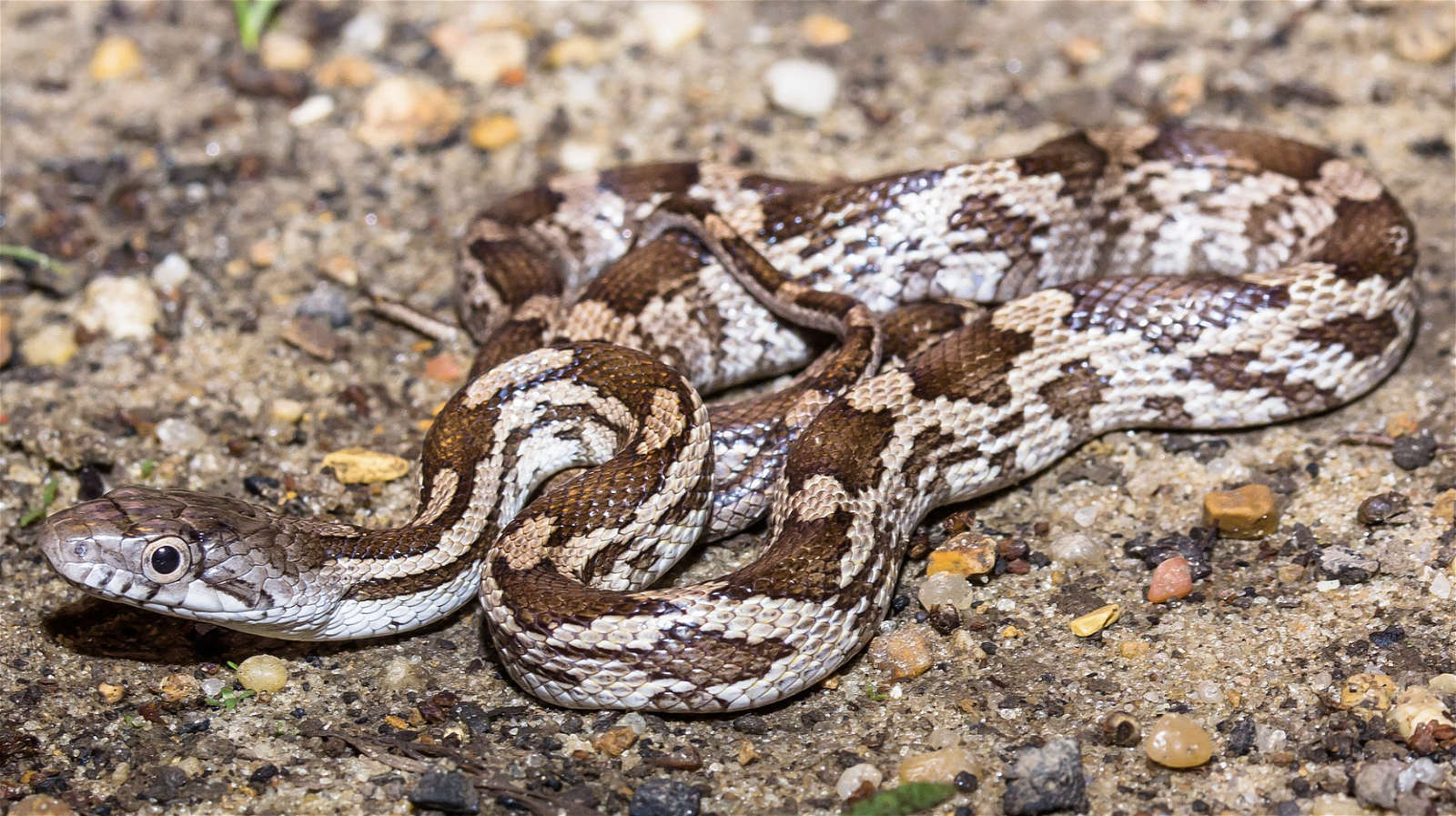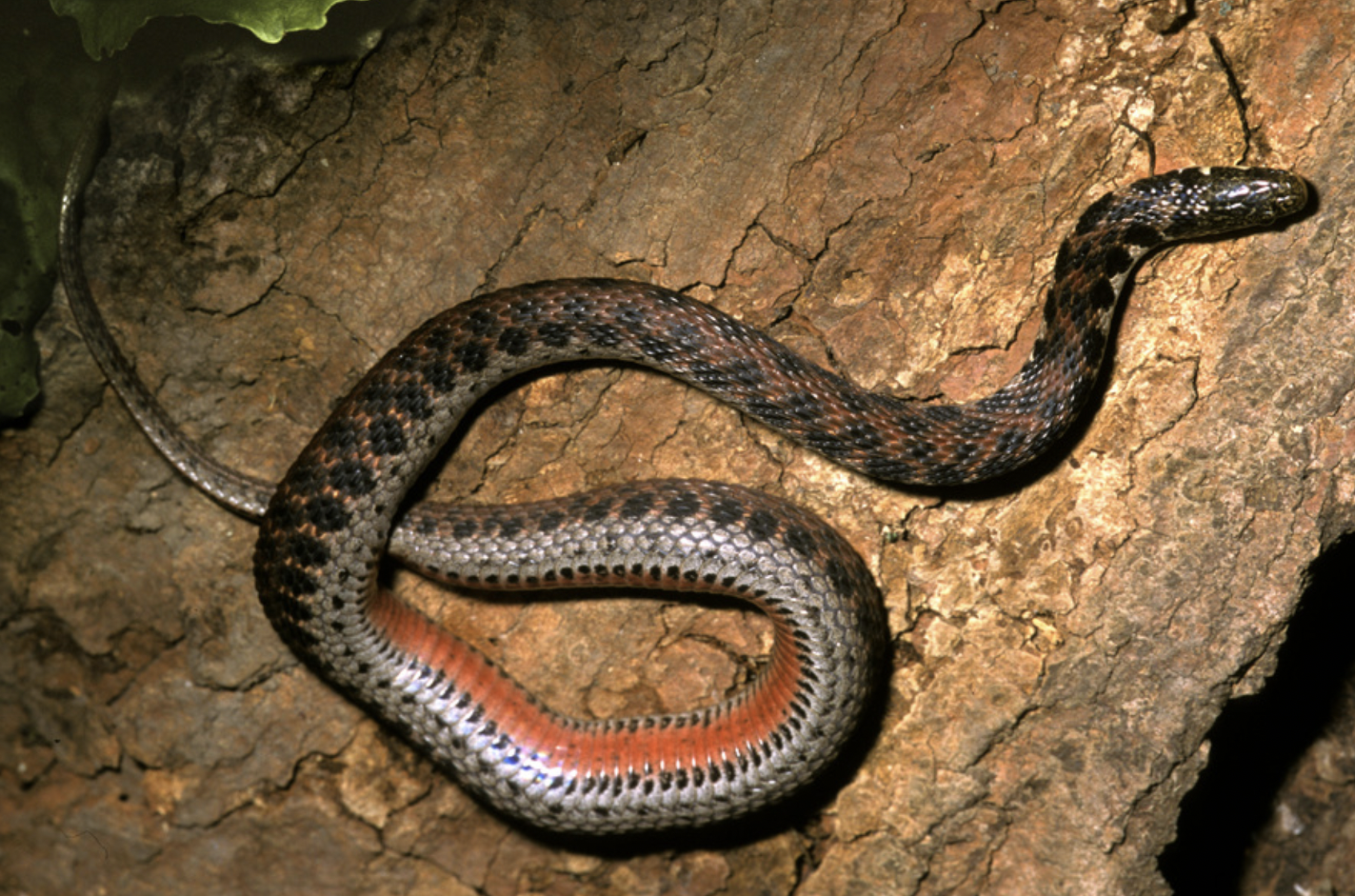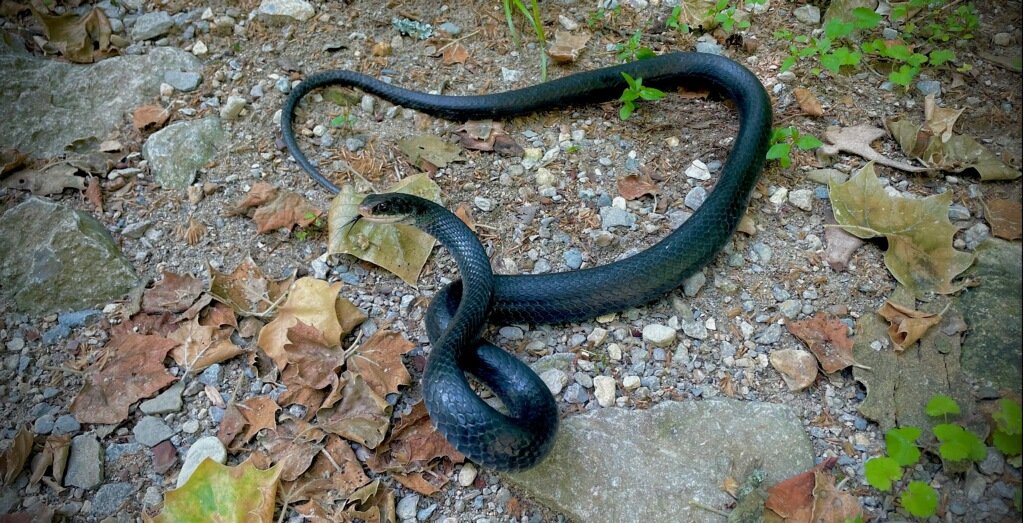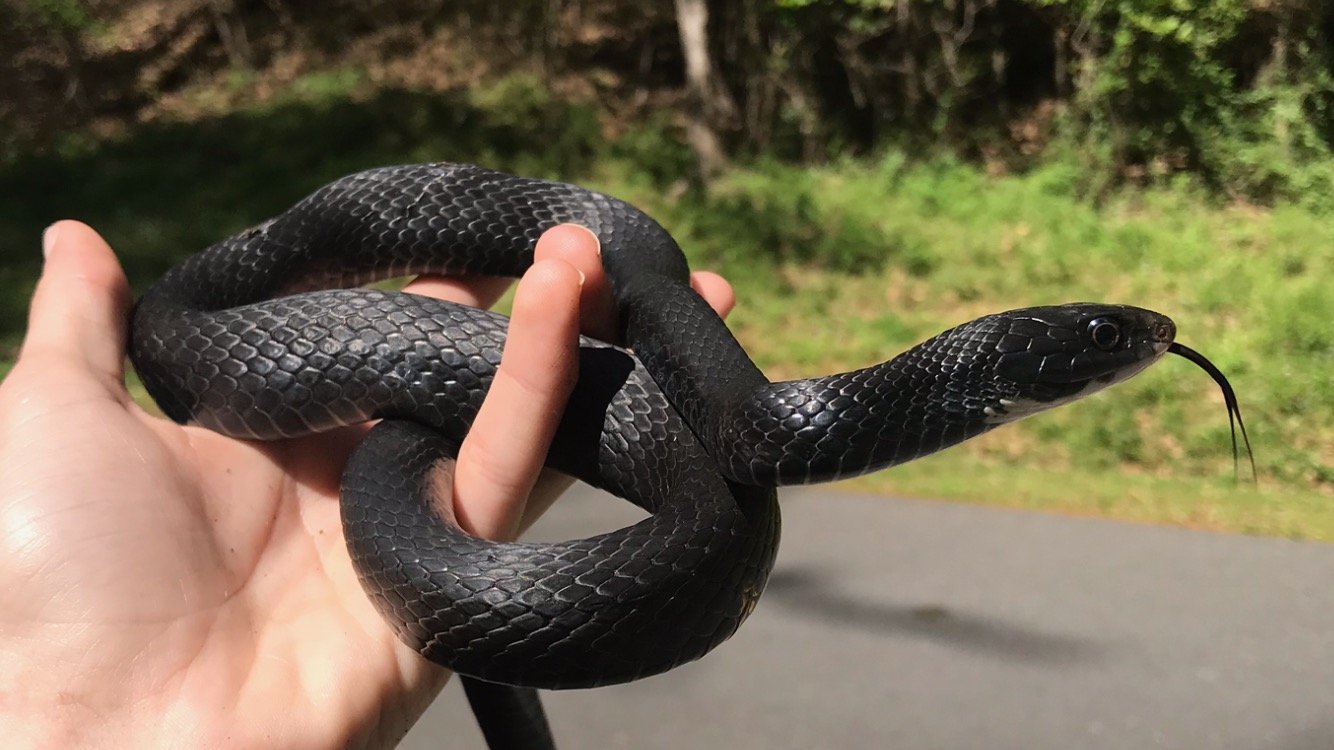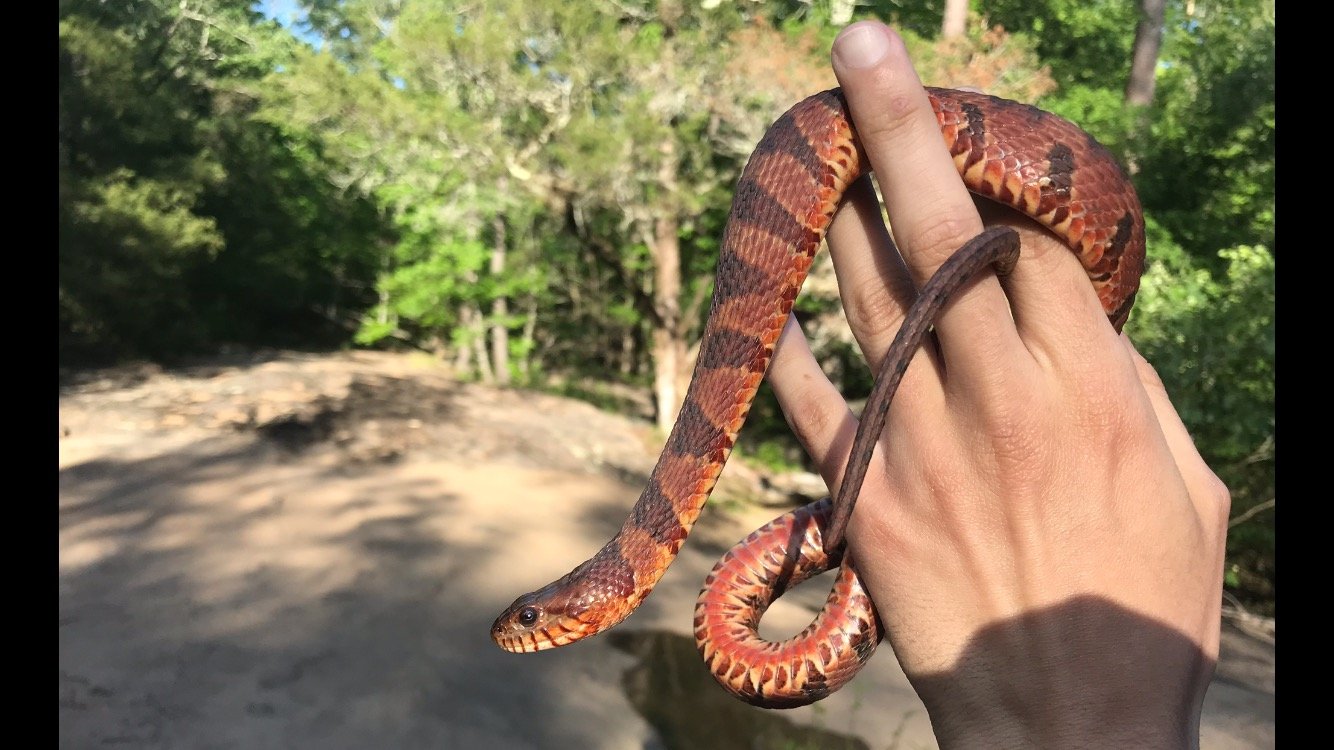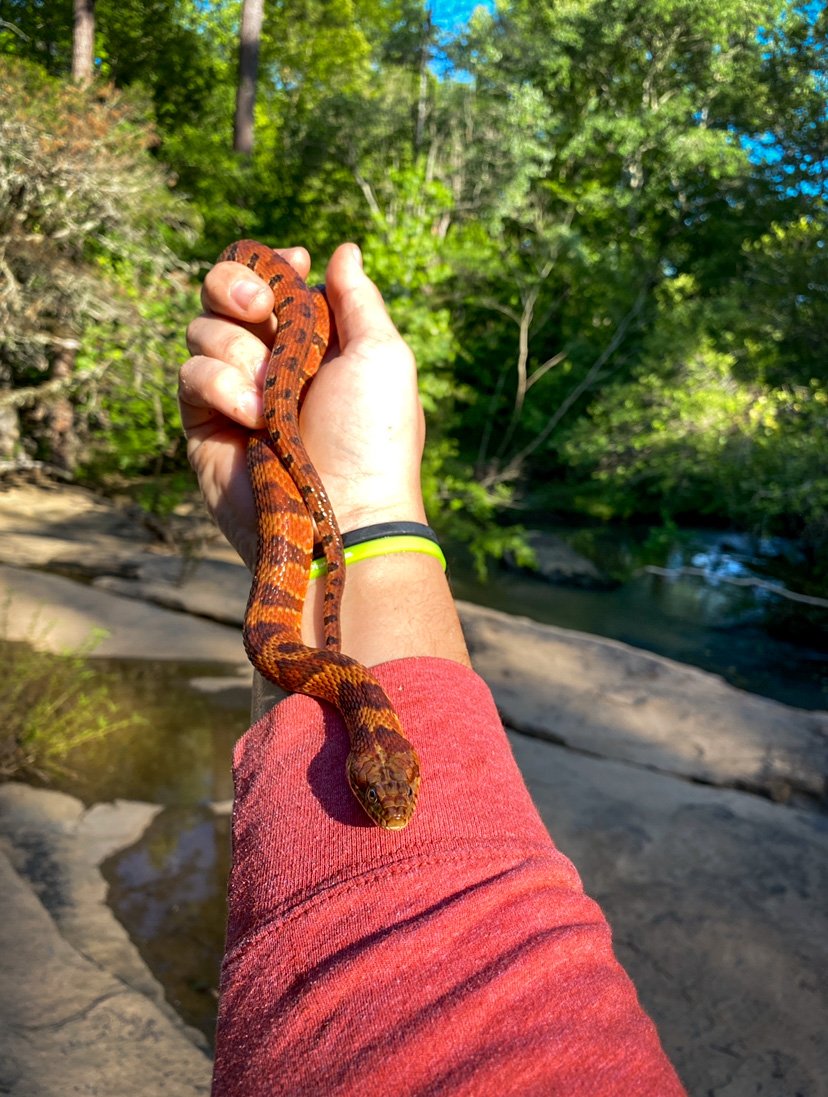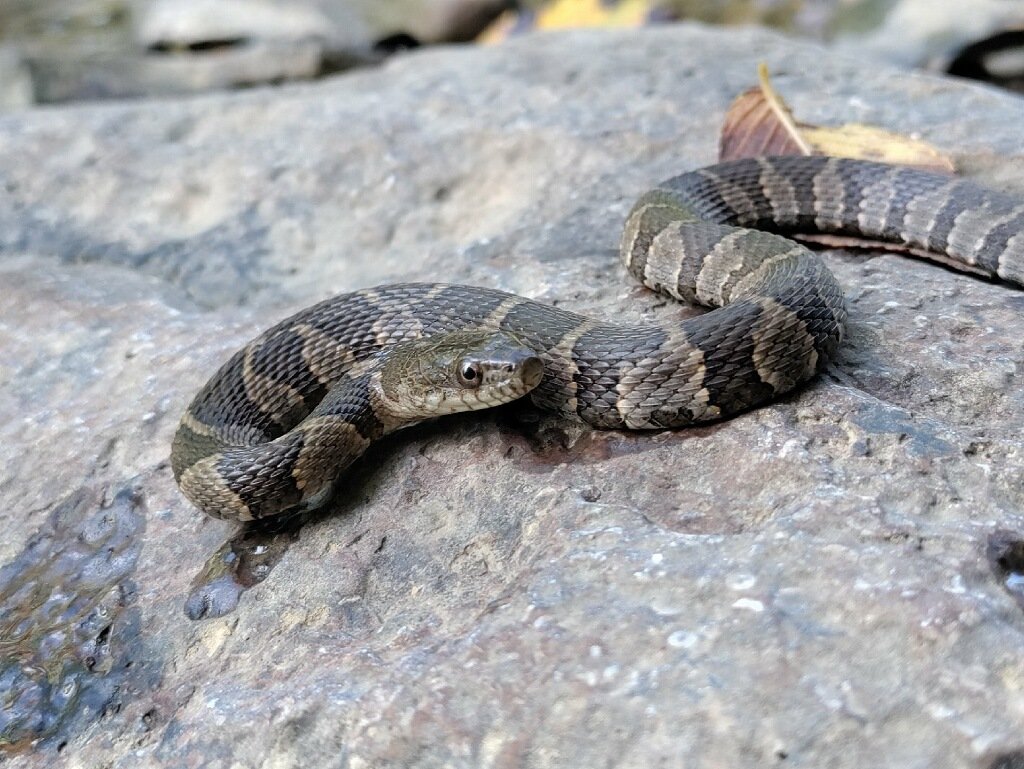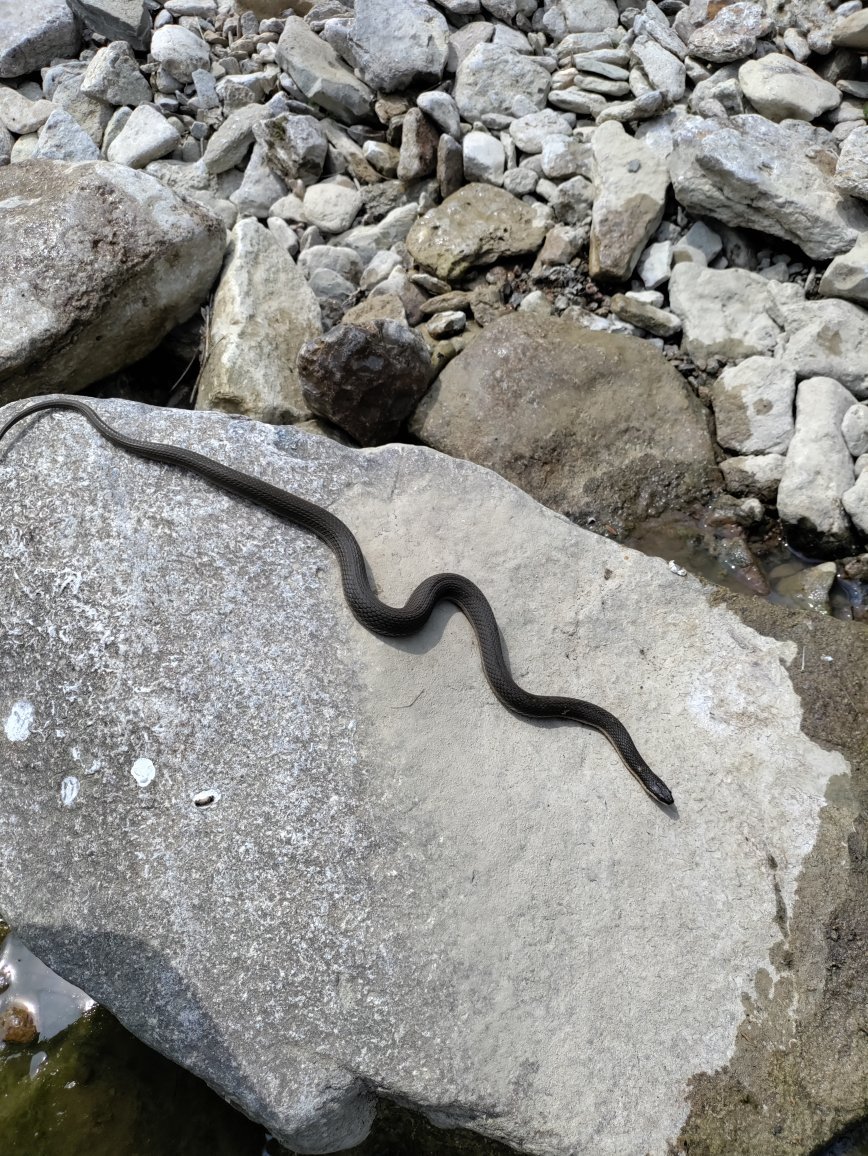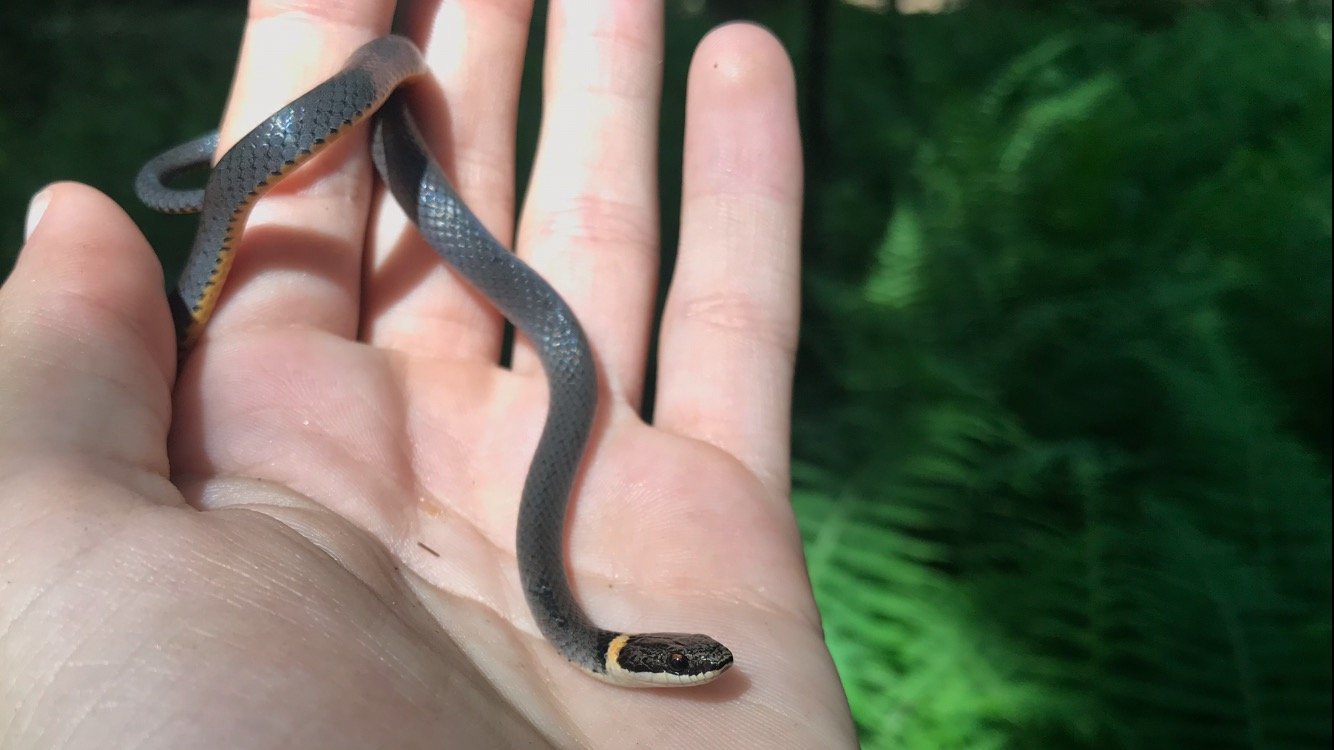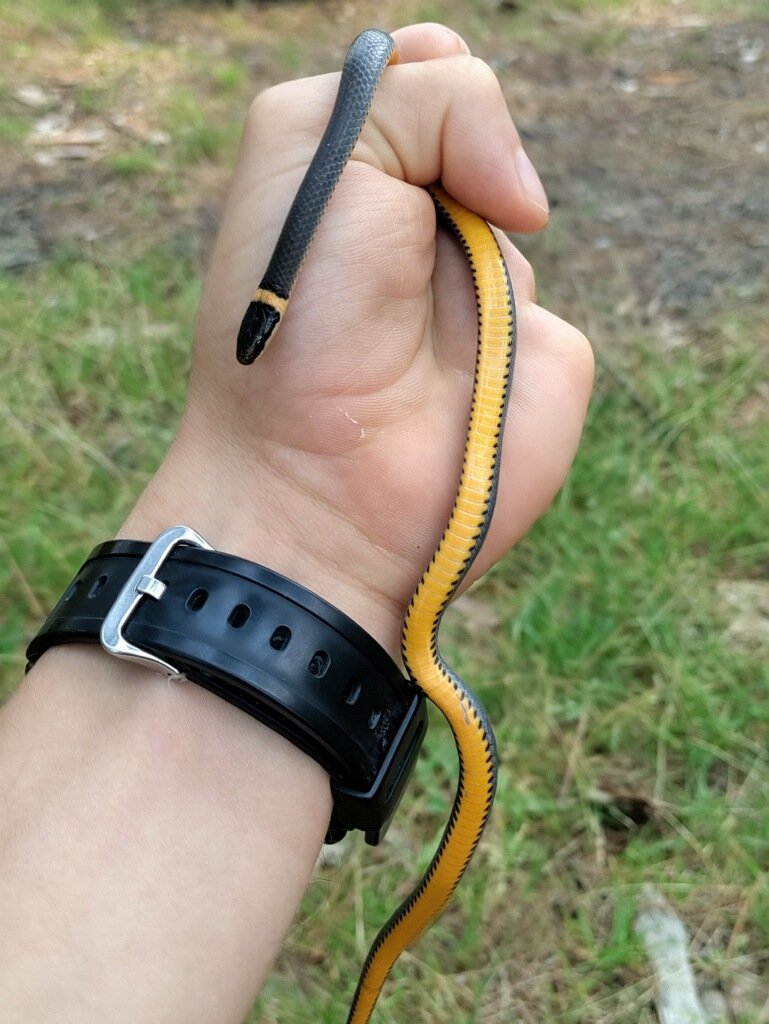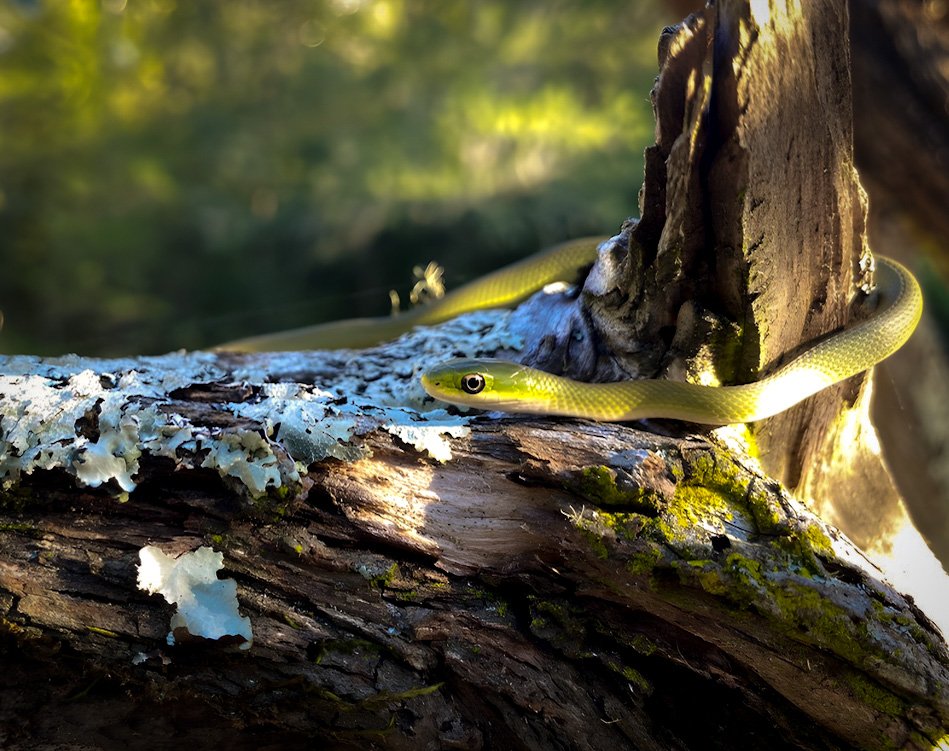Snakes of Northern Kentucky
Visitors to the Creation Museum and Ark Encounter may come across snakes on our properties. Forests and fields surround the attractions, and the beautiful naturalistic gardens and lakes on our grounds provide more homes for wildlife. As stewards of God’s creation, humans are charged with the care of the natural world (Genesis 1:26–28). Sometimes that means sharing space with animals whose habitats we have moved into. With our sprawling botanical gardens and water features, we provide ideal homes for many species, including snakes.
Snakes are some of the most incredible, yet most feared, of God’s creations. Christians’ attitudes towards snakes are often influenced by the serpent’s role in the Genesis 3 account of the fall. Others derive their negative perceptions of snakes from their exaggerated portrayals in the media or myths, legends, and folklore. However, while Satan is certainly evil, snakes are certainly not. Since only humans are made in the image of God (Genesis 1:26–27), only humans are moral beings. Snakes are just land animals created by God on day six of creation week (Genesis 1:25) and are subject to their designs and instincts. They are incapable of good or evil because they are not moral beings like humans. When God first created snakes, they were vegetarian because the world was very good (Genesis 1:29–31). Creation was cursed only after Adam and Eve sinned, and animals began killing each other and hurting humans.
But aren’t snakes dangerous killers? If you’re a mouse or a rat, maybe! The vast majority of snakes see humans as predators and inherently fear us. And when they’re afraid, snakes will defend themselves because they’re trying to survive. While it is true that some snakes possess venom, only about 5% of the roughly 3,500 snake species can kill humans. In fact, dogs kill five times more people than snakes in the US, but you rarely hear that “the only good dog is a dead dog.” Statistically, Americans are safer in the presence of snakes than dogs!
So how can you tell whether the snake in your path is deadly? First, let’s refute some common myths that claim to answer this question.
- If the snake’s head is triangular and the pupils are elliptical, it’s venomous. If the snake’s head and pupils are round, it’s non-venomous. That’s absolutely not true! All snakes’ pupils change shape, just like ours with the light. And some of the deadliest snakes have rounded heads—think king cobras, mambas, and taipans (the most venomous snakes in the world). In fact, coral snakes, which have the most potent venom of any US snake, have round heads. In contrast, many harmless snakes have triangular heads or can manipulate their skulls to achieve a triangular shape.
- If the snake has a brow ridge, it’s venomous. If it doesn’t, it’s harmless. There’s a large group of venomous snakes called elapids that don’t have brow ridges. Coral snakes are once again an example of a venomous snake that doesn’t follow this “rule.”
- If the snake has heat pits, it’s venomous. If it doesn’t, it’s harmless. I have a pet ball python named Persephone who has a triangular head and heat pits. She’s harmless! Many nonvenomous snake species have heat pits, like some boas and pythons. In contrast, many deadly snakes don’t have heat pits, like the elapids. Again, the coral snake doesn’t follow this rule.
- If the snake floats while swimming, it’s deadly. False. Any snake is capable of swimming however it wants—floating or submerged. Deadly sea snakes dive underwater all the time!
- If the snake rattles, it’s a dangerous rattlesnake. While it is true that most rattlesnake species have rattles (the Santa Catalina species doesn’t), they’re not the only snakes that make rattling noises with their tails. Many nonvenomous species vibrate their tails as a defense mechanism, which can sound just like a rattlesnake’s rattle.
- If the snake has a white mouth, it’s a dangerous cottonmouth. While cottonmouths (also called water moccasins) gape their white (or sometimes pinkish) mouths as a defensive mechanism, so do many other snakes, including many harmless ones.
- Red and yellow, kill a fellow; red and black, good for Jack/venom lack! This catchy rhyme was created to help distinguish venomous coral snakes from species that mimic them, like milk snakes and scarlet kingsnakes. However, this doesn’t work with coral snake species outside the US. Even in the US, there are at least four harmless species where red touches yellow—more than the three harmful species of coral snake here! Also, there is often a lot of variation in coloration within a snake species. While this rhyme can be true in some instances, it’s not reliable.
If none of these methods work, how do you distinguish a deadly snake from a harmless snake? The best way is to learn your venomous species. Thankfully in the US, that only includes rattlesnakes, copperheads, cottonmouths/water moccasins, and coral snakes. Everything else in this country is harmless. But the best rule of all? If you aren’t absolutely certain whether a snake is venomous, leave it alone! Many snake bites occur when people are harassing snakes. Other bites occur when people startle snakes in their hiding spots. Avoid walking in tall grass or dense vegetation. Don’t disturb piles of leaves, rocks, or wood. Remove clutter from your yards—snakes will take up residence there. Whenever you’re exploring nature, be sure to wear boots, pants, and gloves. And once again, if you see a snake, it’s best to leave it alone.
So, what should you do if a snake slithers in your path while visiting the Creation Museum or the Ark Encounter? Just leave it alone! Calmly wait for it to pass by—no need to scream and jump around. It’s just trying to get on with its life. No snakes in the United States are capable of eating humans, so the species here don’t see us as food—they see us as potential predators. If a snake bites you, it’s in self-defense. To avoid being bitten, simply leave them be.
To help our guests better understand our slithery friends, I created this guide below to help identify our 13 local native snake species. Except for the copperhead, all snake species in northern Kentucky are harmless to humans.
Black Rat Snake
Growing up to six feet or longer, the black (or western) rat snake (Pantherophis obsoletus) is one of Kentucky’s longest snakes. Young snakes are gray with brown or black “saddles” and turn darker as they age. Adults are primarily black but may still display faint juvenile patterning. They are excellent climbers and are often seen in trees or barn rafters. They eat a wide variety of small animals, including other snakes. Black rat snakes are commonly seen at the Creation Museum and the Ark Encounter. In fact, one lived in the Eden Zoo’s hay storage for many years, which we zoo staff appreciated because it kept the rodents under control! While harmless, they will lift and kink their bodies, stand their ground, and fight back if they feel threatened.
Copperhead
The copperhead (Agkistrodon contortrix) is the only snake in northern Kentucky whose venom can harm humans. Even so, their bites are rarely fatal, and they are very uncommon in the area. In my many years at Answers in Genesis, I have never seen one. Nevertheless, it’s important that you learn to recognize their patterning. As their name suggests, they are coppery, varying from deep reddish brown to light tan. Their most distinctive features are their “Hershey kiss” patterning, brow ridges, and triangular heads. They average about three feet long as adults. Juveniles have yellow-green tail tips that they wiggle as lures for prey. They rely on camouflage for protection and can easily disappear into the forest floor or piles of leaves and wood. When threatened, they freeze instead of fleeing and may also vibrate their tails 40 times per second. Most copperhead bites occur because people don’t see them and step too close.
DeKay’s brown snake
The little DeKay’s brown snake (Storeria dekayi) grows less than two feet long. As their name suggests, they’re light to dark brown in color with a lighter stripe down their backs, bordered by rows of dark spots. They eat mostly snails, slugs, and earthworms. In fact, they have specialized jaws that help them remove snails from their shells. Despite often dwelling among humans in urban and suburban areas, they are shy and secretive, often hiding under rocks or logs. When threatened, they’ll try to flee and release a stinky musk. If they feel cornered, they may raise the front of their bodies while swaying side to side and gaping their mouths.
Eastern garter snake
Eastern garter snakes (Thamnophis sirtalis sirtalis) are probably one of the most common snakes found in backyards, as they like to hide in piles of leaves, rocks, or wood. Averaging 2–3 feet in length, they range greatly in color and pattern. Their base color is usually green, brown, or black and features distinct striping and spotting patterns. When threatened, they may flatten their heads and bluff strike. Garter snakes have a Duvernoy’s gland, which produces toxins when chewed into prey. This breaks down poison from toads, a favorite food. While not deadly, garter snake bites can cause irritation in humans. I’ve caught quite a few of them roaming the zoo grounds!
Eastern hognose snake
I’ve had several guests insist to me that they’ve seen cobras here in the United States. But there are no cobras native here, so what they likely saw was an eastern hognose snake (Heterodon platirhinos). These adorable snakes can flatten their heads and upper bodies to mimic a cobra’s hood. This display is often combined with hissing loudly and bluff striking, which has earned them nicknames like “puff adder” or “blow viper.” If that fearsome display doesn’t work, they’ll flip over and dramatically play dead! They’ll writhe their bodies, gape and burst blood vessels in their mouths, dangle their tongues, and defecate on themselves. If you try to pick them up, they’ll just dangle; if you try to flip them right-side up, they’ll flip right back over! Hognose snakes are rear-fanged venomous, but a bite from one is not deadly to humans and will only cause minor irritation. They like to eat poisonous toads that will swell up as a defense mechanism. The rear fangs “pop” the toad, and their venom breaks down the toad’s poison. They don’t get very big—only about two feet on average.
Eastern milk snake
Eastern milk snakes (Lampropeltis triangulum triangulum) are one of about 24 subspecies of milk snakes, a type of kingsnake found throughout North America. Milk snakes earned their name because of a myth that they drink milk from cows’ udders. This falsehood likely arose because they are often found in barns with ample shady spots and delicious rodents. Milk snakes get their species’ scientific name, triangulum, from the Latin word for “triangle,” which refers to their three typical colors: red, black, and white. This is a form of mimicry called Batesian mimicry, in which a harmless species mimics a harmful species—in this case, the coral snake. Each milk snake subspecies has different coloring and patterning depending on its region. Eastern milk snakes have thick red saddles lined in black on a gray background, which means they are sometimes confused for copperheads. They will also rattle their tails like rattlesnakes as a defense. Kingsnakes are named because they often eat other snakes; this species is no exception. Venom-neutralizing properties in their blood allows them to consume deadly snakes.
Gray rat snake
Like its close relative, the black rat snake, the gray (or midland) rat snake (Pantherophis spiloides) can also reach over six feet long and is an excellent climber. It can often be found near people, as it likes to eat rodents that human activities attract. Juveniles are brown-gray with prominent dark “saddles” down their backs. In the southern part of their range, they retain this coloration into adulthood. Those in northern areas get darker as they age, with some resembling the black rat snakes as adults. When startled, they freeze, rattle their tails, and kink their bodies. They may also bluff strike and release a foul musk.
Kirtland’s snake
The tiny but colorful Kirtland’s snake (Clonophis kirtlandii) only grows about 18 inches long at most. Their gray, brown, and black checkerboarding on their backs conceals a bright red belly beneath. They prefer to live near water and enjoy hunting aquatic critters like crayfish, minnows, salamanders, frogs, and even leeches. If they get scared, they’ll either curl up to the size of a quarter in an attempt to disappear or freeze in a rigid line. If they can flee, they will—these snakes are not fighters, and there are no official records of them ever biting people.
Northern black racer
The northern black racer (Coluber constrictor constrictor) is one of 11 subspecies of the eastern racer. Reaching an average of six feet in length, their long bodies are solid black or blue-gray with white chins. Racers get their name from their speedy movement. They’re highly active diurnal snakes, prowling for a variety of small animals. Despite their species name, constrictor, they’re not constrictors. Instead, they pin their prey in place and swallow them whole. They’re quite curious and are often observed periscoping, raising their upper bodies off the ground to investigate their environment. Racers are harmless, but if they feel cornered, they’ll put up an energetic fight. If you hear them rattle their tails, it’s time to back off. Perhaps the most amusing snake story from my time at Answers in Genesis revolves around black racers. A new plant was moved into Ken Ham’s office from our greenhouses. It turns out a mother racer laid her eggs in the pot, and about a dozen baby snakes hatched in Ken’s office! The zoo was called to rescue the babies and release them back into the wild.
Northern water snake
The most common snake seen at the Creation Museum is the northern water snake (Nerodia sipedon sipedon). Our sprawling botanical gardens, with their water features and lake, provide the perfect habitat for these aquatic snakes. Unfortunately, these nonvenomous snakes closely resemble venomous copperheads or cottonmouths and can give our guests quite a fright! But northern water snakes have much longer, more slender bodies, rounder heads, and no heat pits. Our region also has no cottonmouths, and copperheads are extremely rare. They enjoy basking on logs or rocks near the water between hunting aquatic prey like fish, frogs, or turtles. When guests walk by, it can startle them, and they may quickly sprint to the water and splash inside. As long as you leave them alone, they prefer to “flight” instead of “fight!” However, they can be quite aggressive if they feel harassed. If you see one, just leave it alone, and it’ll leave you alone!
Queen snake
The lovely queen snake (Regina septemvittata) only grows about two feet long. They range from dark brown to olive to gray, with peach or yellow stripes running down their undersides. Juveniles have even more stripes that fade as they age. Queen snakes are very picky about their environment. The water must remain at least 50 degrees Fahrenheit and must be clean with a rocky bottom. They feed almost exclusively on crayfish. They prefer freshly molted crayfish that can’t fight back. Queen snakes can hunt underwater using their tongues to collect scents and carry them to the Jacobson’s organ in their mouths. While I’ve never found a queen snake at our attractions, if you head to Williamstown Lake down the road from the Ark Encounter, you’ll find plenty! Just start turning over rocks, and you’re sure to find some. While they are reluctant to bite, they’ll begin thrashing and releasing a foul musk if they feel scared.
Ringneck snake
Ringneck snakes (Diadophis punctatus) are a diminutive but distinctive Kentucky species. Only growing about 18 inches in length, these snakes get their name from the vibrant rings often found around their necks. Their dark bodies range from black, brown, olive, or gray in color. The rings and underbelly can be white, cream, yellow, orange, or red, but a few snakes lack the rings and underbelly coloration altogether. These snakes can often be found by overturning rocks or logs in woods or near streams. Unlike most solitary snakes, ringnecks will share dens and hiding spots. They are nocturnal and very secretive during the day. To ward off predators, they will flip their lower bodies and curl their tails to expose their brightly colored bellies, as bright colors usually mean “toxic” in the animal kingdom. Like garter snakes, ringnecks have a Duvernoy’s gland and rear fangs to inject venom into prey. However, this venom is not deadly to humans, and they rarely bite. What is most “dangerous” about this snake is their extremely smelly musk! If you ever hold one, you’re more likely to get a stink bomb than a bite!
Rough green snake
The coolest snake I’ve ever found at the Ark Encounter was a rough green snake (Opheodrys aestivus) just a few weeks ago! This species is probably the easiest to identify in our area because it’s bright green. They spend much time in trees, so the green coloration helps them camouflage. Rough green snakes are very skinny with rough scales and grow about 3–4 feet long. These snakes eat mostly insects and other arthropods. They don’t bother constricting—they just grab their prey and swallow them whole. During courtship, males show off for females by head-bobbing, tail-waving, and chin-rubbing. They are quite docile and don’t have any strong defense responses. I was able to hold the one I found, and it never tried to bite!
As you can see, we have some pretty fascinating snakes here in northern Kentucky! I hope getting to know them more helps you understand how little threat they pose—even the copperheads are unlikely to bite unless seriously provoked, and their bites are rarely fatal. These species will only bite if they feel threatened. We are much bigger than they are, so they see us as a potential threat. If you see any of them performing the fear displays described above, just back off and leave them be. They’ll go on their merry way and keep eating those pesky pests so we don’t have to deal with them! But I also hope this guide has helped you understand and empathize with snakes a little more. After all, they are one of God’s created creatures and deserve our respect.
Recommended Resources
- © 2025 Answers in Genesis
- Privacy Policy
- Contact
- About

